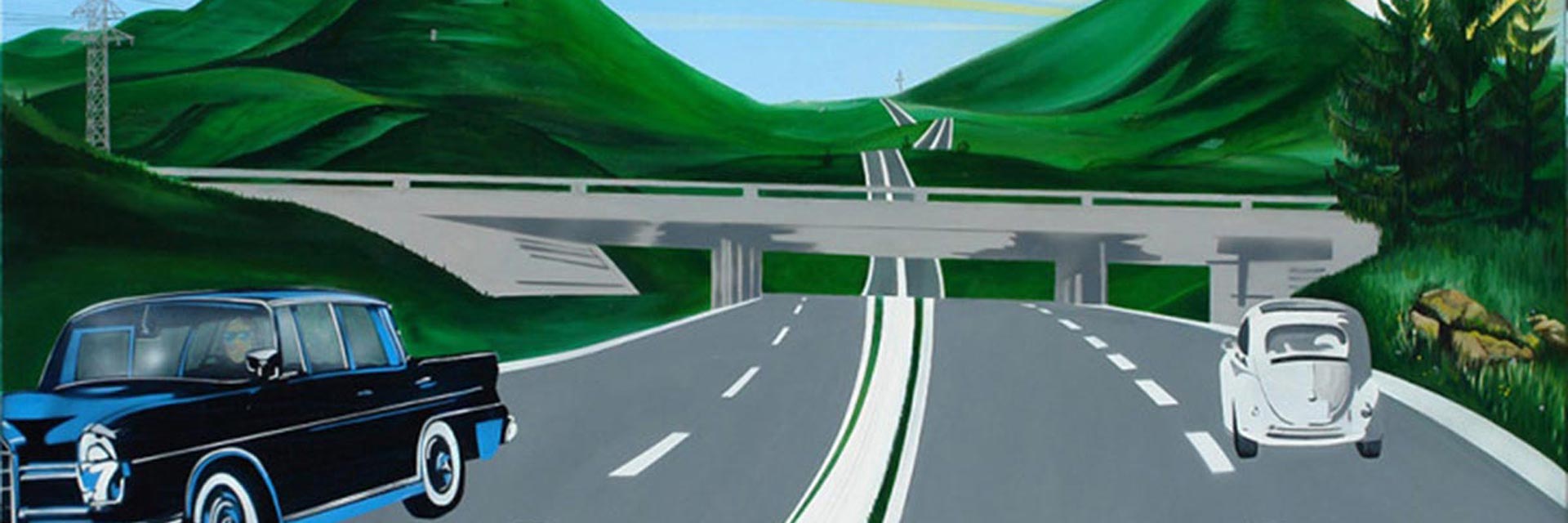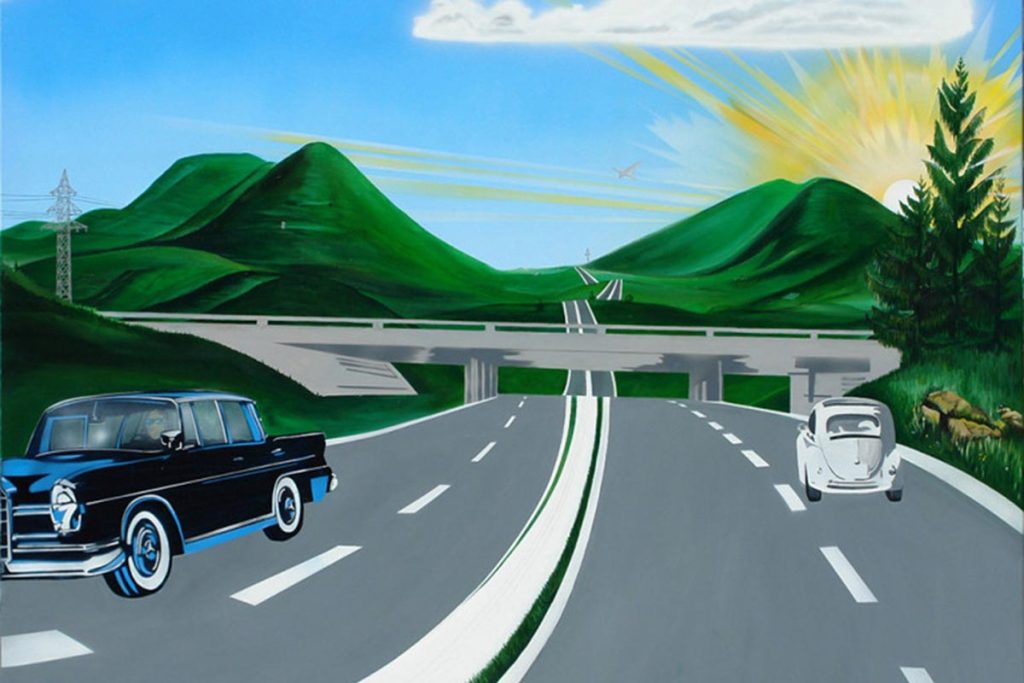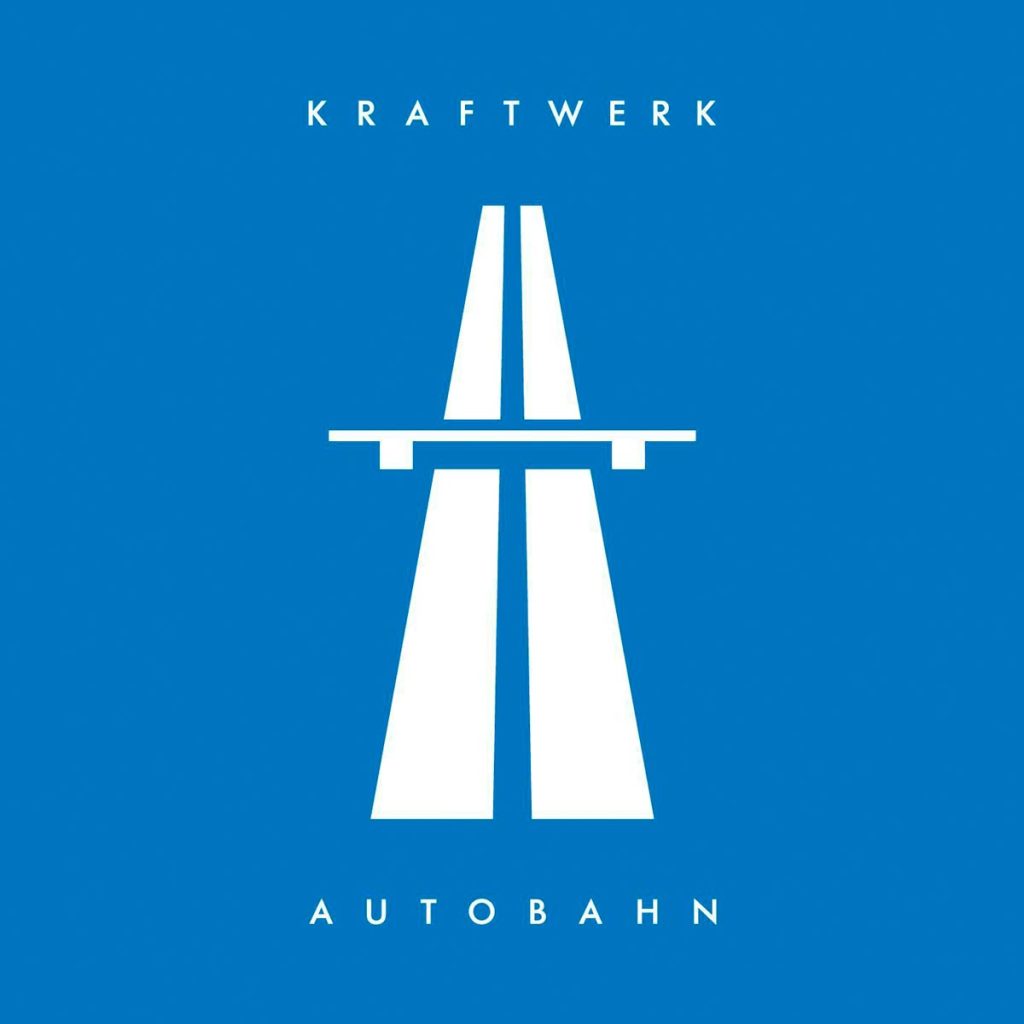Prog rock entails tempo changes, classical and jazz reminiscences, extensive instrumental parts and surprising instruments. Because all of this is hard to fit into a three-minute song, there is the long track.
Until then, rock fans knew Kraftwerk as an experimental, improvising Krautrock band – and rightly reacted with irritation – because on Autobahn there were almost only electronic sounds to be heard. The bass was provided by the Minimoog, even the drums came from the machine. In America, this was later called “electro-pop”.
Hardly anyone could have guessed in 1974 what significance this music was to gain – as the initial spark for disco, techno, house, electronica. Ralf Hütter (a trained architect) and his comrades-in-arms were the real pioneers of electronic music: multimedia visionaries with a sense of mission. Early on they had their own studio and label. Their first formation was called „Organisation zur Verwirklichung gemeinsamer Musikkonzepte“ (“Organization for the Realization of Common Musical Concepts”). They saw themselves in a cultural-historical context going back to the 1930s.
For Ralf Hütter, driving and music were closely linked. “My first Mini-Moog cost as much as my gray VW Beetle: 5500 German marks. With the car I could drive around – and with the synthesizer I could open up the whole world.” He said that on the autobahn at the time he perceived “the hum of the engines, the tuning and the singing air currents” as if they were electronic sounds. “We drove around a lot and listened to the changing sounds. The idea was to recreate those sounds on the synthesizer.” The sound of the car horn or oncoming cars was imitated electronically. And the monotony of highway driving was translated into musical monotony – it almost had a trance quality.
Many repetitions, few chord changes. Simple four-note motifs and a robotic chant (in German!). Kraftwerk never simply used technology – they made it the theme. “Man and machine,” became their permanent motto. The piece itself (22:30) is built like a prog-rock longtrack – a string of similar verses with unique episodes in between. The beginning of the piece – legendary: The VW Beetle engine start. The refrain – a classic: “Wir fahr’n, fahr’n, fahr’n auf der Autobahn”. (In America they understood: “fun, fun, fun”.) The first verse speaks of the beautiful landscape, the second of the gray road band, the third then of the car radio – a collage of frequency search noises, voices, piano improvisation “from the radio” follows. The refrain then apparently also comes from there – a song within a song. For the episodes in between, bass figures and rhythm change, but the tempo remains (fast disco beat). The first episode (ca. 3:20 to 6:40) even contains a little interaction between flute, electric guitar, synthesizer – not rocky, but not fully composed either. Episode 2 (approx. 8:15 to 13:15) initially focuses on the electronic drums and sounds (speeding cars) – with “electronic timpani”, vocoder, etc. An “Adagio” part (from 16:00) finally varies the chorus, and from this develops a kind of coda with altered vocals and theme, and with additional synthesizer parts. These devices were still analog at that time – and monophonic.
Kraftwerk – Autobahn on discogs.com.



